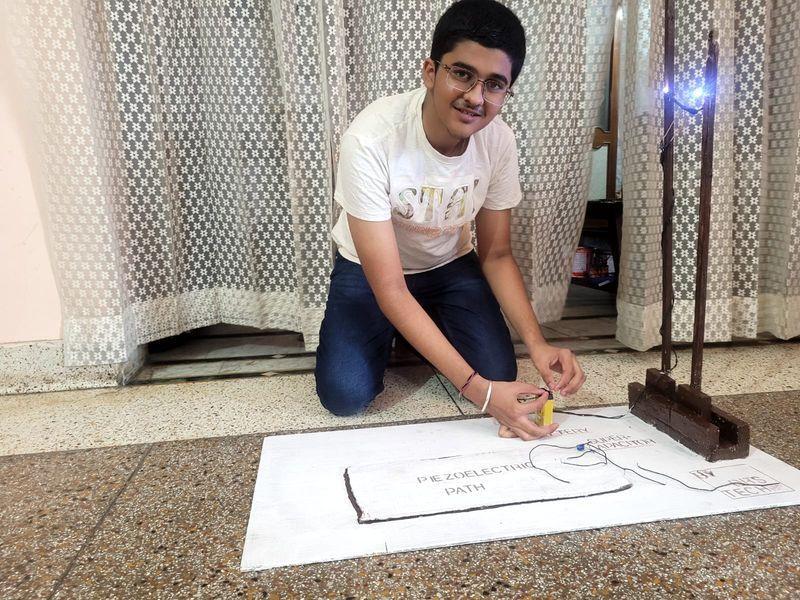
Hoshiarpur Student Builds Device to Generate Power from Footsteps
In a remarkable display of innovative thinking and problem-solving skills, a Class 8 student from Hoshiarpur, Punjab, has created a device that can generate power from the simplest of human activities – walking. Sanchit, the talented student, has designed a project called “Power beneath our feet” that uses piezoelectric technology to convert footsteps into electricity. This groundbreaking invention has piqued the interest of local officials, scientists, and enthusiasts alike, garnering widespread attention for its potential to revolutionize the way we think about power generation.
The concept of harnessing energy from human movement is not new, but Sanchit’s device takes it to a whole new level. His innovative use of piezoelectric technology, which converts mechanical stress into electrical energy, has resulted in a device that can generate enough power to charge small electronic devices, such as smartphones and watches. The device is designed to be compact and portable, making it an ideal solution for individuals who spend a significant amount of time on-the-go.
Sanchit’s journey began when he was tasked with creating a science project for his school. He was determined to come up with something unique and impactful, and after conducting extensive research, he stumbled upon the idea of harnessing energy from footsteps. He spent months experimenting with different materials and designs, finally refining his device to make it efficient and effective.
The device consists of a series of piezoelectric sensors that are embedded in a wearable shoe sole. As the wearer walks, the sensors generate electricity, which is then stored in a small battery. The battery can be removed and used to charge small electronic devices, making it a convenient and sustainable way to keep devices powered up.
Sanchit’s device has the potential to make a significant impact in various fields, from healthcare to environmental conservation. For instance, in remote areas where access to electricity is limited, his device could be used to power medical equipment, lighting, and communication devices. It could also be used to power small-scale agricultural projects, such as irrigation systems and water pumps.
The innovative project has caught the attention of local officials, including the District Education Officer, who has praised Sanchit’s creativity and ingenuity. “Sanchit’s project is a testament to the innovative spirit of our students,” said the District Education Officer. “His device has the potential to make a real difference in people’s lives, and we are proud to support his work.”
Sanchit’s achievement has also sparked interest among scientists and researchers in the field of renewable energy. “Sanchit’s device is an exciting example of how piezoelectric technology can be used to generate power from human movement,” said Dr. Ashok Kumar, a leading researcher in the field of renewable energy. “This technology has the potential to be scaled up and used in a variety of applications, from wearable devices to infrastructure development.”
As Sanchit’s project continues to gain attention and recognition, it is clear that this young student has a bright future ahead of him. His innovative thinking and problem-solving skills have already made a significant impact, and it is likely that his device will continue to evolve and improve as he grows and develops as a scientist and inventor.
In conclusion, Sanchit’s device is a remarkable example of the potential of innovation and creativity in solving real-world problems. By harnessing energy from the simplest of human activities – walking – he has created a device that can generate power and make a real difference in people’s lives. As we move forward, it is essential that we continue to support and encourage young innovators like Sanchit, who are shaping the future of science and technology.
News Source: https://www.tribuneindia.com/news/jalandhar/power-beneath-feet-student-turns-footsteps-into-electricity/






